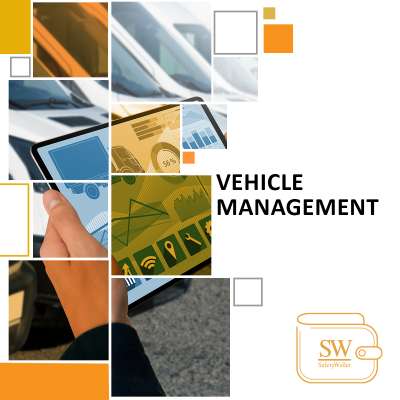
Target Audience
Introduction to Vehicle Management (Work-related Vehicle Safety), e-Learning Training Course
This course provides background to workplace transport safety and to health and safety in general.
It is important that the candidate understands the responsibility, including the legal obligation, of the employer to take the necessary steps to keep workers and members of the public safe.
Journeys taken in a vehicle of an employer such as a van, bakkie, or fleet car, entails the responsibility of the employer to ensure the safety of employees using the vehicle.
There should be appropriate policies and procedures in place to ensure safety when employees drive a work-provided vehicle or drive their own vehicle for work.
Driving for work involves a risk not only for drivers but also for fellow workers and members of the public such as pedestrians and other road users.
Employers are therefore responsible for having systems in place to ensure that Driving for Work activities are road safety compliant. The activities with managing and controlling vehicle damage or loss must be controlled through the implementation of regulated controlled processes.
The course provides operational guidance regarding common vehicle operations and the risks commonly associated with them and how these can be safely dealt with according to each operation.
Aim of the Vehicle Management (Work-related Vehicle Safety), e-Learning Training Course
To familiarise the candidate with the foundation of safe driving principles and safe driving practices with their corresponding risks.
To make the candidate aware of the costs of an accident to a business which includes:
- Repairing or replacing damaged capital
- Loss of or damage to goods
- Insurance costs
- Compensation payments
- Legal costs
- Paying for the time that employees are not working as result of an accident
- Clean up operations
- Investigations, and several others.
To outline good safe driving tips and information on vehicle inspection. To adequately familiarise the candidate with information pertaining to driving in different conditions, including:
- Variable lighting and visibility conditions
- The driving of front and rear-wheel vehicles
- Driving under different road conditions, and
- Driving different transmission systems.

Course Outcome to the Vehicle Management (Work-related Vehicle Safety), e-Learning Training
Upon completion of this course, the candidate will be able to:
- Demonstrate basic knowledge of the responsibility pertaining to transport safety and accountability.
- Explain and develop a hazard assessment program with the risks involved and the ability of employees to avoid them while driving.
- Introduce a Vehicle Driver policy which is aimed at encouraging safe driving and outlines the appointment of company drivers in writing.
- Explaining the importance of having a robust vehicle maintenance program for all company-owned vehicles and mobile equipment in addition to encouraging the inspection of such vehicles.

Key Content Covered
This course is aimed at ensuring that correct and most suitable driving principles are enforced where company vehicles are involved. It also serves to ensure that employees are made aware of their surroundings and that they know the risks involved with driving and the maintenance of vehicles.
The content of this course extensively covers the following:
- The identification of Safety, Health, and Environmental hazards which includes safety responsibilities in the job description of employees and contractors’ contracts pertaining to safe driving practices.
- Evaluation of potential hazards and implementation of required processes to promote safe driving by including safety issues and responsibilities in the information, instruction, and training provided.
- Fundamental understanding of the types of driving conditions that employees may be exposed to and knowing how to perform a hazard assessment to determine the safe actions to be taken.
- Uses and principles of duty to care in managing all transportation operations, identify the most common impacts that poor driving skills, poor or incomplete policies and procedures may have on employees.

Assessment
The candidate attending the course will be assessed against the outcomes of each element through the completion of a subscribed knowledge assessment. The assessment will cover the essential embedded knowledge as stipulated in the course and will ensure that the candidate can apply the learning to a working situation.
Conditions of enrolment and certification
To gain access to this training program, it is mandatory that the employer subscribe to the SafetyWallet membership subscription so that the learner can enrol to any of the Health and Safety e-Learning training programmes. Attending candidates must obtain a pass mark of at least 75% or higher is necessary in each Modular Assessment. Should these conditions have been met, the candidate will receive an accredited Certificate of Completion.
Register and book your course via My Safety Shop

Other Training Availible
- Accident and Incident Investigation E-learning
- Drug Testing in the Workplace
- Basic Fire Fighting and Prevention e-Learning Training Course
- Basic Fire Safety e-Learning Training Course
- Basic First Aid (Previously Level 1) e-Learning Training Course
- COID – Compensation for Occupational Injuries and Diseases e-Learning Training Course
- Covid-19 Workplace Induction e-Learning Training Course
- Driven Machinery e-Learning Training Course
- Effective Contractor Management e-Learning Training Course
- Electrical Safety e-Learning Training Course
- Environmental Management e-Learning Training Course
- General Driving Safety e-Learning Training Course
- Hazardous Chemical Substances HCS in the Workplace e-Learning Training Course
- Health and Safety Representative Functions in the Workplace e-Learning Training Course
- HIV and AIDS Prevention in the Workplace e-Learning Training Course
- Incident Reporting e-Learning Training Course
- Introduction to Working at heights and Fall Protection e-Learning
- Lifting Machine Operator Safety e-Learning Training Course
- Managing Infectious Disease in the Workplace e-Learning Training
- Occupational and Work-related Diseases e-Learning Training Course
- Occupational Health and Safety Act for Management e-Learning
- Occupational Health Monitoring, e-Learning Training Course
- Permit to Work Systems e-Learning Training Course
- Personal Protective Equipment (PPE) e-Learning Training Course
- Planned Task Observations e-Learning Training Course
- Smoking in the Workplace e-Learning Training Course
- Vehicle Management (Work-related Vehicle Safety) e-Learning
- Waste Recycling e-Learning Training Course
- Measuring and Monitoring of Workplace Conditions, e-Learning

